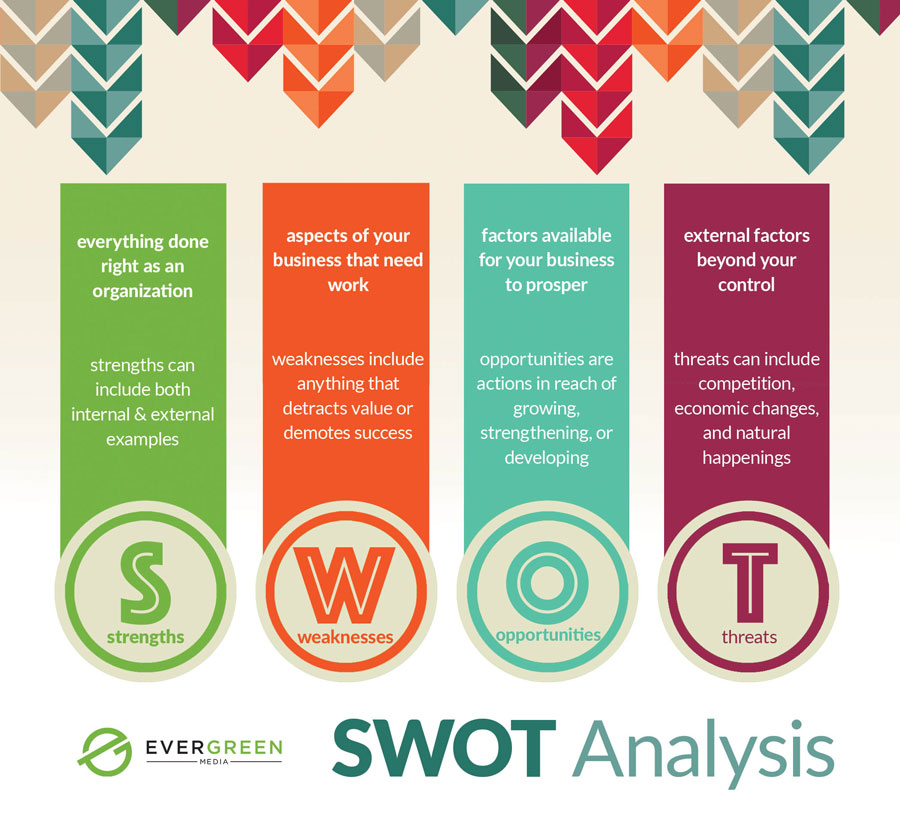If you have read any professional development books, or taken any business classes, you’ll oftentimes learn that an analysis can be incredibly helpful when looking to grow, pivot, or begin something new. A simple way to start is a little USP ID and SWOT digging.
Unique Selling Proposition
USP (Unique Selling Proposition) identification is relatively simple. It is the factor that sets you apart from your competition in the same vertical industry, enabling you to stand out to your customers. In order to identify your USP, you will first need to ask yourself a bit of information about your audience.
What is the change you want to make with your product or service?
(this is why you are doing what you do)
What are you promising your customers?
(psst… don’t just say you will do your best; everyone does that)
Who is your product or service meant for?
(it won’t / can’t be for everyone)
As the saying goes: at the heart of marketing, every time, is the promise. However, don’t be so quick to answer these questions. If your promise is too big or too abstract in comparison to the trust your target audience has in you, it turns into perceived risk and your voice will fade into the background to be ignored.
SWOT Analysis
The next questions you will want to ask yourself after determining your audience and your USP is your strengths, weaknesses, opportunities, and threats (SWOT). Sorting out these pillars of business will not only help shine light on things you can improve on to grow in the right direction, but also show factors of your business you can highlight when asking for support.
Strengths
These encompass everything you have done well as an organization, including both internal and external examples. Answer these questions to help get you started.
- What do you do well?
- What internal sources do you have?
- How fast can you respond to customers?
- What makes your customers keep coming back to you?
- Are you leading your market in your industry?
- What makes you better than your competitors?
Weaknesses
In opposition to strengths, the “w” stands for weaknesses. These are aspects of your business that need some work — anything that may detract value or demote your level of success. Many of the questions from above can spark ideas for weaknesses, but here are a few more!
- What does your competitor(s) have that you lack?
- Are there limitations to your resources?
- How often does your pipeline result in a sale?
- Which aspects can your personnel tasks / training improve?
Opportunities
As an external factor, your business can look for ways to prosper through opportunities available to you. Typically, these are actions or adjustments within reach of growing, strengthening, and/or developing your business.
- What is the latest technology you can use for your business?
- Are there trends in the industry you can take advantage of?
- Who is following you, and can you partner exposure for success?
- What customer need / problem can you address / solve further?
Threats
Yes, threats. It’s not something fun to talk about, as these are typically out of your control. However, it is important to acknowledge the threats, create a plan for “what if”, then move past it. Don’t let the threats frighten you into perfection paralysis. You CAN succeed, even with a list of threats in your way.
- Are there new regulations / laws in your industry?
- What factors can negatively affect your growth (political or economical)?
- What obstacles do you face?
- Are you competing with others for the same service?
- Could any of your weaknesses affect your likelihood of success?
These identification factors can be enlightening to your business, and a great way to kick off a new chapter of success. If you have any questions, or hit any snags and want to talk through them, feel free to contact us!





